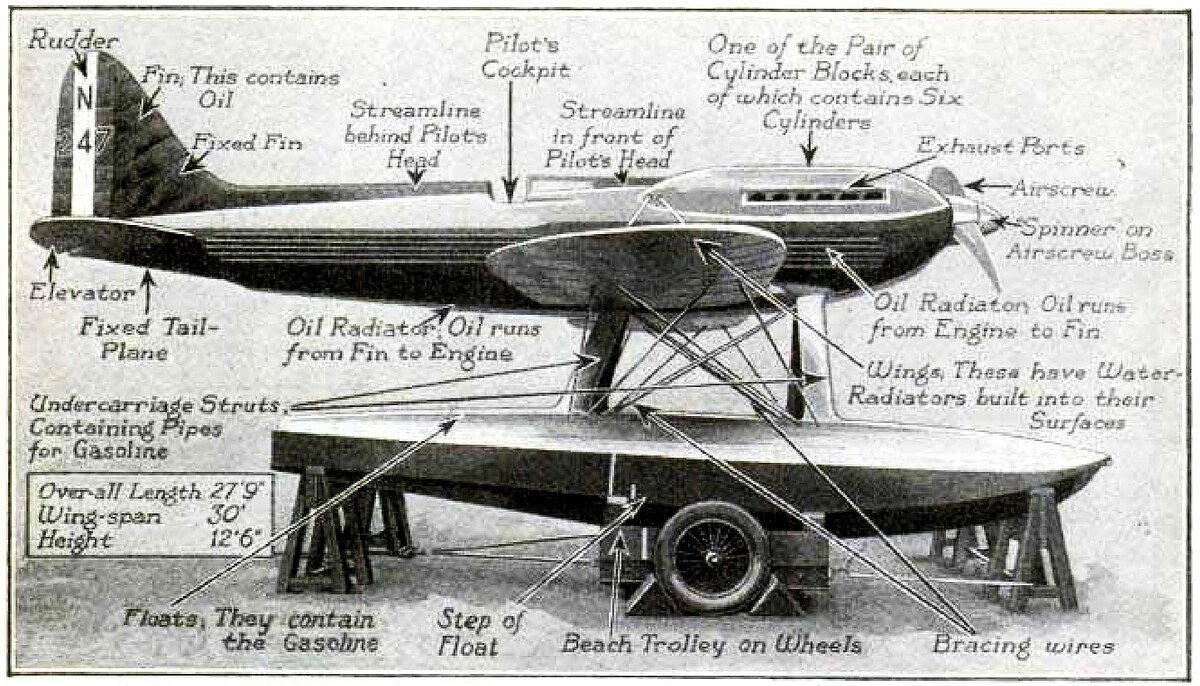Speed Kings: Racing for the Schneider Trophy
For anyone who loves aviation history or tales of daredevil pilots, the Schneider Trophy races are the stuff of legend. These 1920s and 1930s contests were like Formula 1 for seaplanes—high-stakes, high-speed races that pushed aircraft design to its absolute limits. Today, you can relive this golden age of speed at Solent Sky Museum in Southampton, home to one of the world’s rarest racing seaplanes: the Supermarine S.6A.
Walking into the museum, you’re immediately drawn to the sleek, silver shape of the Supermarine S.6A N248. With its long nose and distinctive twin floats, it looks like it’s still ready to race across the Solent at 300 mph. The S.6A wasn’t just fast; it was a champion. In 1929, it helped Britain claim the Schneider Trophy and set a new world speed record—achievements that paved the way for R.J. Mitchell’s next great creation: the Supermarine Spitfire.
The museum’s Schneider Trophy exhibition doesn’t stop with the S.6A. It also features beautifully preserved engines, including the mighty Rolls-Royce R engine—a 2,350 hp monster developed specifically for the races. Display cases filled with photos, blueprints, and trophies bring the feverish competition of the era to life. You can almost feel the tension of those sunny September days at Calshot Spit, when teams from Britain, Italy, and the U.S. fought to claim aviation’s ultimate speed prize.
What makes Solent Sky truly special is how it connects these incredible machines to the local landscape. The Schneider races took place just a few miles from the museum, off the Calshot Spit in Southampton Water. A visit to the museum feels like the perfect prelude to exploring the real locations where the drama unfolded nearly a century ago.
After marvelling at the S.6A and the Schneider collection, head south from the museum to Calshot itself. Standing on the long shingle spit, with the Solent stretching out before you, it’s easy to imagine the roar of racing engines bouncing across the water. Calshot Castle, a Henry VIII-era fort turned Schneider Trophy base, still stands at the spit’s tip. During the races, the castle’s control tower was a nerve centre for timing and officiating. Today, it’s managed by English Heritage, and climbing its battlements offers panoramic views over the very course the seaplanes once sped around.
For a real sense of the speeds involved, bring along binoculars and watch modern yachts and powerboats cruising the same waters—then picture the S.6A hurtling past them. Interpretive signs at Calshot provide more context, and on a clear day you can see across to the Isle of Wight, linking you back to other aviation stories like those at the Wight Aviation Museum.
Back at Solent Sky, finish your visit with the museum’s other gems: climb into the Sandringham flying boat, sit in a Harrier cockpit, or take in the Spitfire display—because, without the innovations of the Schneider racers, the Spitfire might never have existed.
Whether you’re a pilot, a history buff, or just looking for an exciting day out, Solent Sky Museum and Calshot Spit together offer an unforgettable adventure into the thrilling world of Britain’s speed kings of the skies. Standing beside the S.6A, you’re not just looking at an aircraft; you’re meeting the champion that helped secure Britain’s place in aviation history and shaped the course of the Second World War. Few museum exhibits connect so dramatically to their landscape—and few adventures let you follow in the wake of such extraordinary feats of engineering and courage.
So next weekend, head to Southampton and step into the world of the Schneider Trophy. Walk through the halls of Solent Sky, breathe in the smell of old aircraft, then feel the sea breeze at Calshot where legends once raced—because the spirit of the speed kings lives on.

